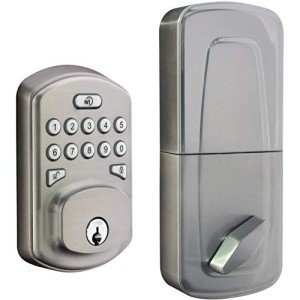The Ultimate Guide to Buying LED Lights in the UK
Recently, LED lights have actually risen in appeal due to their energy performance, durability, and versatility. As the UK moves towards more sustainable energy practices, many house owners and companies are making the switch from traditional incandescent and fluorescent bulbs to LED lighting. This post intends to direct readers through the process of purchasing LED lights in the UK, highlighting crucial considerations, benefits, and often asked concerns.
Understanding LED Lighting
What are LED lights?LED mean Light Emitting Diode. Unlike traditional bulbs, LED lights create light through a semiconductor. This innovation is not only more energy-efficient but likewise produces less heat, minimizing electrical power costs in the long run.
Advantages of LED Lights
Energy Efficiency
- LED lights consume to 80% less electrical power than traditional incandescent bulbs.
- They transform nearly all the energy they consume into light rather than heat.
Longevity
- Average life expectancy of LED lights is around 15,000 to 50,000 hours, substantially outliving traditional bulbs.
Ecological Impact
- Decreased energy consumption reduces carbon footprints.
- LEDs contain no harmful products like mercury, making them ecologically friendly.
Range and Versatility
- Offered in different shapes, colors, and brightness levels appropriate for various applications.
Immediate Lighting and Dimming Capabilities
- LEDs illuminate instantly and can be dimmed for specific lighting needs without flickering.
Key Factors to Consider When Buying LED Lights
When searching for LED lights in the UK, it's necessary to consider different factors to guarantee you acquire the right product for your needs.
1. Brightness Level
Brightness in LED lights is determined in lumens. Greater lumens indicate brighter lighting. Here's a quick recommendation:
| Wattage (Traditional Bulb) | Lumens (LED Equivalent) |
|---|---|
| 40W | 450 |
| 60W | 800 |
| 100W | 1600 |
2. Color Temperature
LEDs are available in numerous color temperatures, measured in Kelvin (K). Here's a breakdown of color temperatures:
- Warm White (2700K - 3000K): Ideal for homes, develops a cozy atmosphere.
- Cool White (4000K - 4500K): Suitable for workspaces, supplying a tidy, bright light.
- Daytime (5000K - 6500K): Mimics natural daytime, best for outdoor use or particular job lighting.
3. Dimmability
Not all LED lights are dimmable. If you want the flexibility to adjust brightness levels, ensure that the LEDs you pick are compatible with dimmer switches.
4. Component Compatibility
Think about the type of fixtures in which you'll be positioning the LEDs. Typical fitting enters the UK include:
- BAYONET (B22): Commonly utilized in homes.
- Edison Screw (E27, E14): Popular for both decorative and general lighting.
- GU10: Often utilized for spotlights and recessed lighting.
5. Energy Rating
Examine the energy score of the LED light. Many LED bulbs will be appreciated (A+ or greater) for energy performance.
6. Life expectancy & & Warranty Investing in quality LED lights frequently includes service warranties varying from 1 to 5 years. A longer warranty might show a more resilient item.
Where to Buy LED Lights in the UK
LED lights are commonly available throughout various platforms, including:
Physical Stores:
- DIY and home improvement shops like B&Q, Homebase, and Wickes.
- Supermarkets such as Tesco and Sainsbury's.
Online Retailers:
- E-commerce giants like Amazon and eBay.
- Specialized lighting sites like LED Hut or Lights4Fun.
Local Electrical Suppliers:
- Independent electrical supply shops often offer professional assistance.
Recommended Brands
When buying LED lights, think about reputable brand names understood for their quality and development, such as:
- Philips
- Osram
- Sylvania
- GE Lighting
- IKEA
Regularly Asked Questions (FAQs)
1. Are LED lights really worth the financial investment?Definitely. While LED lights may have a higher in advance expense compared to traditional bulbs, their energy performance and long life expectancy mean they will conserve you money on energy costs gradually.
2. Can I utilize LED lights in my existing fixtures?Yes, as long as you choose bulbs suitable with your fixtures (BAYONET, Edison Screw, GU10, and so on), you can quickly change traditional bulbs with LEDs.
3. Why are some LED bulbs more costly than others?Cost differences can be associated to brand reputation, technology (such as smart features), energy performance ratings, and service warranty periods.
4. Do LED lights discharge damaging radiation?No, LED lights do not emit ultraviolet or infrared radiation and are considered safe for home use.
5. Can I recycle LED bulbs?Yes, numerous local councils have recycling programs for LED bulbs. Examine Lighting And Lamps for disposal directions.
Purchasing LED lights in the UK is a smart choice for those aiming to save energy, decrease costs, and improve their lighting options. By considering factors such as brightness, color temperature, fixture compatibility, and reliable brands, purchasers can confidently make notified choices. Embracing LED technology is not just useful for private households and companies, however it likewise adds to a more sustainable future for the environment. Whether you head to a local store or browse online, the shift to LED lighting is a step towards a brighter, cleaner world.

